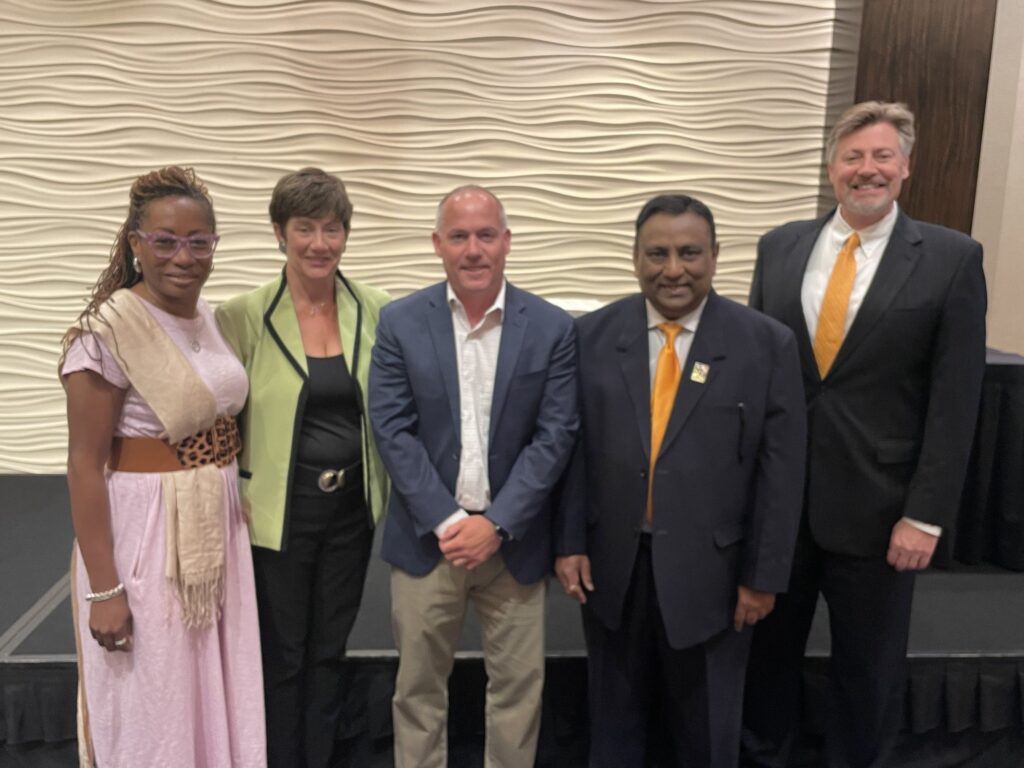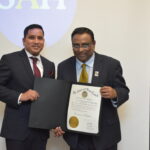Dr. Sanjay Rai’s journey from central India to becoming Maryland’s Secretary of Higher Education is a powerful testament to the promise of education and perseverance. As the first immigrant and first South Asian to lead the Maryland Higher Education Commission (MHEC), Dr. Rai, shares insights from his transformative academic path across India, Canada, and the U.S., and offers valuable advice to South Asian students aspiring to study in America.
In this exclusive interview with South Asian Herald, Dr. Rai discusses Maryland’s robust higher education landscape, the state’s growing international student population – particularly from India – and the role of global perspective in shaping future-ready graduates.

Tell us a little bit about your background?
I grew up in central India and was a first-generation high school graduate. Realizing the importance of education for social and economic mobility, I went on to obtain degrees from three international systems of higher education, India (undergraduate), Canada (graduate) and the United States (Ph.D.). Throughout my career, I have held various positions in higher education, from professor to senior administrator, at community colleges and public and private four-year institutions.
Now, I am honored to be the first immigrant and first South Asian to have the tremendous opportunity to serve as the Secretary of the Maryland Higher Education Commission (MHEC). I am deeply thankful to Governor Wes Moore and Lieutenant Governor Aruna Miller and the people of the great state of Maryland for entrusting me to be in a position that enables me to lead one of the best and most comprehensive higher education systems in the country.
You came to the U.S. as an international student over 30 years ago and have been able to find great success in your studies and career. What advice would you give to South Asian students who are considering studying in the U.S?
The U.S. has the best higher education system in the world. It’s unparalleled in terms of quality and relevance to the global society and, most certainly, to business and industry. The country’s institutions of higher learning provide skills that employers seek in the areas of research and innovation, skills that are fueling the emerging segments of our national and global economies such as start-ups and existing ventures. Students from South Asian countries have historically taken full advantage of this world class system and been able to make their marks in a number of professions, namely as CEOs and high-level executives leading companies like Microsoft, Google, IBM, etc. Each entered the country as an international student and can now serve as a role model to those interested in attending college or university in the U.S.

Why do you feel it is important for students to have a global perspective?
The number of international students (1.1 million) attending schools across the U.S and the number of students from around the country choosing to study abroad are prime examples that the world is becoming increasingly globalized. With a growing interdependence of the world’s economies, cultures, and populations on each other, it is essential that all students know and understand different languages and practices. Many times, the best way to gain knowledge and understanding is by immersing yourself in the very thing you seek to learn more about.
How does Maryland rank in the number of international students in comparison to other states?
As noted, there are over 1.1 million international students attending colleges and universities throughout the United States, representing 6 percent of the total higher education population in the country. Maryland ranks 16th in the nation for international student enrollment with over 22,000 students. That number represents 7 percent of those who choose to study in the U.S. These statistics make it clear that international students play a critical role in our higher education system.
So, we know about 7 percent of international students who come to the U.S. choose to study in Maryland. Tell us more about the types of programs offered to students in Maryland and the opportunities they may have after graduation?
Maryland’s higher education institutions are some of the best in the country. Institutions like the University of Maryland College Park, Morgan State University, and Johns Hopkins University offer high quality academic and research programs in areas such as artificial intelligence, engineering, quantum computing, biotechnology, business, cybersecurity, medicine, and education to name a few. The presence of government agencies like the National Institutes of Health, the Food and Drug Administration, and the National Institute of Standards and Technology (NIST), and private entities like Lockheed Martin and Astra Zeneca allows our institutions to collaborate and extend experiential learning opportunities where students can use the skills gained in school to work, grow, and thrive.
India recently surpassed China as the leading origin country for international students in the U.S. What does that mean for recruitment in Maryland?
Yes. India has overtaken China as the leading origin country for international students in the U.S. During the 2023-24 academic year, over 331,600 Indian students enrolled in U.S. higher education institutions, according to the Institute of International Education. China has just under 277,400 students enrolled. International students provide significant academic, cultural, and economic contributions to the country, their campuses, and the state of Maryland. So, we always look forward to welcoming them to study and stay in Maryland. Maryland’s international students contributed nearly $930 million to the state in 2023 alone.

We know South Asians, yourself included, and the children and families of those who came to the U.S. as students have contributed many resources to Maryland and beyond. Tell us about some of the work you and others have done both for the state and across the diaspora?
Let me begin by expressing my deepest gratitude to everyone who gave us an opportunity and provided an environment where we could be successful. Now, we have the responsibility to give back to the community that gave so much to us. South Asians are contributing to community advancement, philanthropy, and the overall economic competitiveness of the state and nation. Particularly noteworthy are our contributions in healthcare, information technology, life sciences, and higher education. I worked with the county to develop international economic and educational partnerships prior to my current role at MHEC.
You worked with the State of Maryland on international efforts before coming to MHEC; and as Secretary, you still play a role in the international space. How will you ensure that the international work you are doing at MHEC now continues into the future?
Higher education will continue to play a central role in economic development and competitiveness for the state. In Maryland, we are global leaders in life sciences, information technology, and business. This is not by circumstance. It is a focused effort that we are expanding further. MHEC will continue to partner with the Office of the Secretary of State and other state, federal, and global organizations to promote the importance of international study and exchange programs for Maryland students and those students from across the globe who are interested in beginning or continuing their educational journeys in the U.S., specifically in Maryland.






